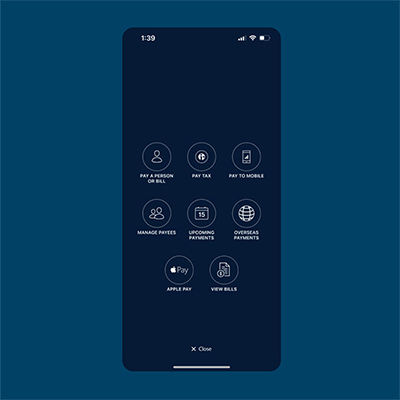What Is Software As A Service?
What is SaaS, and why does it matter?
Software as a Service (SaaS) is a software delivery and distribution model in which a cloud provider(s) develops, hosts, and maintains applications via the internet.
All the automatic updates are done via the internet and the software is available on a pay-as-you-go basis. This means you rent the use of the software or an app and your users connect to it via the internet usually via a web browser.
The cloud provider(s) manages all the traditional software and hardware including the application software, security, and middleware. This makes the service suitable for business users, personal users, and other professionals as it lowers the costs of deploying, scaling, and upgrading business applications compared to maintaining on-premise systems and software.
History behind SaaS
In the early years, the software delivery system was known as time-sharing; this is where computers were connected to terminals that shared the computer's software.
As time moved on businesses came up with Local Area Network (LAN), a local version of time-sharing in which the business was responsible for managing and supplying the network and hardware.
With the emergence of the internet, technology providers now started hosting the applications making them available to their customers via the internet. This model was known as an Application service provider (ASP). It was costly and time-consuming since each customer required their own software version. Due to this, in the late 1990s, SaaS solutions emerged.
SaaS was more efficient than Asp since a single application instance could serve multiple users and customers. This eradicated local software installations as it provided ways to aggregate, collect, and centralize application data.
The SaaS delivery model has remained constant and evolved from the first generation to the modern SaaS suites which enable high business visibility and extend SaaS power through technologies such as blockchain, IoT, AI, Machine Learning, Virtual reality, and chatbots.

We helped ANZ with their software
Advantages of SaaS
Requires Less Hardware - Since the applications/software are hosted remotely and in the cloud, organisations only invest in basic hardware such as laptops or computers.
Easy to Buy - SaaS accommodates flexible payment models as the pricing is usually based on an annual or monthly subscription. This makes business applications cost low than licensed ones. Unlike the traditional desktop software, in which there was an upfront software cost and support fee.
Low Maintenance - Since SaaS eradicates the need for set-up, installation, and daily software maintenance, its initial setup cost is lower than that of other enterprise software. By using SaaS, it is easy to run updates and monitor and the pricing largely relies on usage.
Multi Device Support - SaaS services support and can be accessed from many devices such as laptops, phones, tablets, and desktops.
One to Many - SaaS services are offered in a one-to-many model whereby a single instance of an application is shared by multiple users.
Does not require special hardware or software versions - The software version is typically the same to all users and it is accessed using web browsers. Also, SaaS outsources software and hardware maintenance to the Iaas provider reducing the overall IT support costs.
No client-side Installation - Since the services are directly accessed from the service provider using the internet, the client does not require any software installation.
API integration - Through standard Apis, SaaS easily connects to other software and 3rd party applications.
Disadvantages of SaaS
Since SaaS runs on a cloud layer, there are some disadvantages such as:
Limited Customisation - SaaS apps are usually one-size-fits-all solutions, which can limit how much you can personalise them to match your organisations specific needs. This means you might have to adjust your way of working to fit the software, which can potentially cause issues if you have unique requirements.
Compliance Challenges - For businesses in industries with strict rules, using SaaS software can sometimes be complicated. Not all SaaS providers might follow the rules your industry needs. To make sure you're following data protection laws and other specific regulations, you may need to put in extra effort and resources. This is especially important in fields like healthcare, finance, or government, where keeping data safe and following rules is paramount.
Difficulty in switching between SaaS Vendors - Switching from one cloud provider to the other is usually difficult. This is because it involves the transfer of large data amounts over the internet. Additionally, some providers have a vendor lock-in and use proprietary technologies and datatypes complicating the data transfer process due to the conditions in place.
Total Dependency on Internet - SaaS services are dependent on the internet, this means without an internet connection, the applications are not usable.
Customers Lose Control over Versioning - In a scenario where a provider(s) has a new version of an application, it automatically updates to all of its customers. This may lead the customers into incurring resources for training as they are not familiar with the new version.
SaaS relation to different industries
The SaaS market has several software products and vendors. The industry players in this market include small, single product vendors and enterprise providers.
SaaS products are diverse and mostly categorised as Business to Business(B2B) and Business to Customer(B2C) or both.
It relates to the different industries by offering key business application products that are fundamental such as:
- Marketing solutions (Mostly in the digital marketing space)
- Enterprise Resources Planning products
- Human Capital Management products
- Supply Chain Management & Manufacturing
- Sales and Service products.
Other enterprise-level SaaS products that are industry-specific for industries such as marketing and payments are known as vertical SaaS products.
SaaS benefits work in benefits that work in the interests of both users and providers. With many SaaS innovations such as AI (artificial intelligence), Machine learning, Chatbots, Digital Assistants, Blockchain, virtual and augmented reality the future of SaaS is very strong and will continue to grow.


